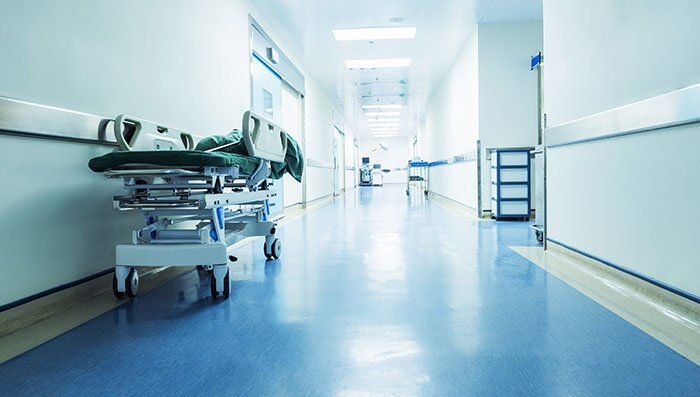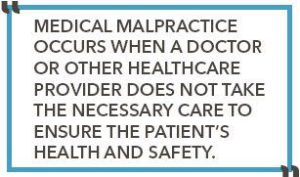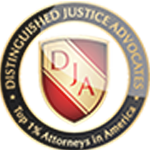- Home
- Our Firm
- Practice Areas
- Bicycle Accidents
- Car Accidents
- Construction Accidents
- Amputations & Limb Loss
- Burns and Construction Accidents
- Construction Wrongful Death
- Crane and Vehicular Accidents
- Construction Negligence
- Construction Slip and Fall Accidents
- Construction Accident Legal Guide
- Construction Site Safety Code
- Cranes & Derricks Safety Standards
- Excavation Safety Standards
- Fall Protection Standards
- General Construction Safety and Health Standards
- High-Risk Construction Oversight
- New York Labor Laws
- New Protocols for Existing and New Concrete-Embedded Fall Arresting Systems
- Personal Protective and Life Saving Equipment Standards
- Scaffold & Sidewalk Shed Safety
- Scaffold Safety Standards
- Steel Construction Safety Standards
- Construction Zone Accidents
- Dangerous Construction Trades & Professions
- Electrocution Accidents
- Eye Injury
- Failure to Provide Safety Equipment
- Falling Objects Injuries
- Falls from Elevated Work Surfaces
- Fracture Injury
- Forklift Accidents
- Knee & Ankle Injuries
- Knee & Shoulder Injury
- Heavy Equipment Accidents
- Spinal Cord Injury
- Scaffolding Accidents
- Paralysis Injury
- PTSD and Construction Accidents
- Toxic Exposure Injury
- Trench Collapse Accidents
- Traumatic Brain Injury
- Undocumented Construction Worker Injuries
- Workplace Construction FAQ’s
- Dog Bite
- Lead Poisoning
- Motorcycle Accidents
- Pedestrian Accidents
- Personal Injury
- Premises Liability
- Rideshare Accident
- Slip and Fall
- Airport Falls
- Cluttered Aisle Falls
- Workplace Falls
- Common Injuries
- Elevator and Escalator Falls
- Grocery Store Falls
- Aldi Grocery Store Slip And Fall
- Associated Supermarkets
- Big Deal Supermarket
- CTown Supermarkets
- Compare Foods Supermarket
- Good N’ Natural Organic Market
- Fairway Market
- Fine Fare Supermarkets
- Food Bazaar Supermarket
- Gristedes Supermarkets
- Key Food Stores
- Met Foodmarkets
- Pioneer Supermarkets
- Shop Fair Supermarket
- Shoprite Of Gateway Center
- Stop & Shop
- Superfresh Store
- Trader Joe’s
- Wegmans
- Western Beef Supermarket
- Whole Foods
- Ice Slip and Falls
- Inadequate Lighting Accidents
- Loose and Uneven Flooring
- NY Property Owner Responsibility
- Parking Lot & Sidewalk Falls
- Public Park Falls
- Public Transportation Falls
- Snowstorm Falls
- Stairway Falls
- Slip and Fall Legal Guide
- Slip And Fall Settlements
- Slip And Fall FAQs
- Slippery Floors Accidents
- Statute of Limitations
- While Pregnant
- While Visiting New York
- Why Are Slip and Fall Cases So Hard to Win?
- Truck Accidents
- Traumatic Brain Injury
- Wrongful Death
- See All Legal Services
- Cities We Serve
- Client Testimonials
- Contact Us
- Blog
- FREE CASE EVALUATION (212) 279-2000
Who Is Responsible for A Fall Injury at A Hospital or Healthcare Facility?

When hospital patients fall and suffer injuries, their recovery from their original injuries or illnesses can be derailed, requiring them to stay in the hospital or inpatient facility much longer. Not only is this physically and mentally stressful for the injured patients, but it also affects their loved ones and can impact the victims’ financial security.
Property owners – including hospitals, rehabilitation centers, and other medical facilities – are required to maintain safe premises for the people they serve. When an authorized client or visitor suffers an injury because of a hazard or condition in a facility or on a piece of private or public property because of a hazard that the owner should have known about and addressed, the owner of the property may be liable for the victim’s resulting damages. This is known as premises liability.
Hospitals, nursing homes, rehabilitation facilities, and other medical providers serve individuals who are at a greater risk of slipping and falling and becoming injured because of their conditions. In these facilities, property owners must be especially careful to prevent falls by keeping facilities well-lit, providing secure handrails on stairs and along walls, and ensuring that floors are free of clutter and other trip or slip hazards, for example.
What Causes Patients to Fall in Hospitals?
Many different issues can cause patients to slip, fall, and suffer injuries in inpatient facilities. These include:
Poorly lit rooms and hallways
Slippery floors




- Clutter in hallways, common areas, or resident rooms
- Improper use of chemical or physical restraints
- Muscle weakness
- Fatigue
- Balance disorders
- Visual impairment
When a resident has a high risk of falling, regulations require nursing home staff must develop and implement a care plan to minimize that risk, for example:
- Use no-skid waxes on floors and surfaces coated with grit to create non-slip surfaces in slippery areas such as toilet and shower areas.
- Use waterproof footgear to decrease slip and fall hazards.
- Replace or stretch carpets that bulge or have become bunched to prevent tripping hazards.
- Aisles and passageways should be sufficiently wide for easy movement and should be kept clear at all times.
- Nursing station countertops and medication carts should be free of sharp, square corners.
- Adequate lighting is a must, especially during night hours.
Are Inpatient Falls Considered Medical Malpractice?

When a fall occurs because the patient was not made aware of his or her medication’s possible side effects, was not supervised properly after surgery, was misdiagnosed regarding a condition that affects balance or vision, or was not assessed as a fall risk and managed accordingly, he or she is a victim of medical malpractice. Medical malpractice occurs when a doctor or other healthcare provider does not take the necessary care to ensure the patient’s health and safety.
Proving Liability in a Hospital Fall Case
Whether you have a premises liability claim or a medical malpractice claim, you need to prove that another party’s negligence directly caused your injury. Answer these three basic questions to determine whether your healthcare provider or the owner of the facility was negligent:
- Did they know, or should they reasonably have known, about your risk of injury?
- Could your injury have been foreseen?
- Could they have taken reasonable action to prevent your injury?
If you can answer “yes” to these questions, you may have grounds for a claim. You will need to provide evidence that proves the answers to these questions, such as documentation from your examination after the fall, photographs of the injury and accident site, testimonies from witnesses, and in the case of medical malpractice, input from another doctor discussing where your original doctor made an error.
Seeking Compensation for Your Damages After Falling in a Hospital
Individuals who suffer injuries because of other parties’ negligence are entitled to collect monetary compensation for the following damages:
- Their medical bills, which include emergency medical care, long-term medical expenses, and expenses related to rehabilitation following the injury or necessary surgery.
- Mental pain and emotional suffering.
- Lost wages, including current lost income due to leaving work to recover and future lost income due to a reduced capacity to work.
- Any additional expenses related to the injury, which can include medical aids and reduced quality of life due to chronic pain or disfigurement.
In addition to evidence that proves the liable party’s negligence, you will also have to provide evidence that shows the monetary value of your losses in order to recover compensation. This can be easier than proving that negligence occurred because the evidence you provide for many of these damages is straightforward documentation like medical bills and pay stubs.
Demonstrating the dollar value of your pain and suffering damages, which include your reduced quality of life and your mental anguish, can be a bit more complicated. Dollar figures for these are often reached by applying a multiplier to the victim’s tangible damages figure.
Work With an Experienced New York Slip-and-Fall Lawyer
If you or a loved one suffered an injury after falling in a nursing home, hospital, inpatient facility, or any other medical facility in New York, you could be entitled to recover monetary compensation for your damages through a premises liability claim or a medical malpractice claim.
To learn more and start working on your claim, contact our team of experienced slip-and-fall lawyers at David Resnick & Associates, P.C. today to set up your free case review. We serve residents of all five boroughs and will not charge you for our legal services unless and until you receive compensation.
What Our Clients Say
RECENT NYC SLIP & FALL LAWSUIT VERDICTS
$2 MILLION
Fractured Leg
$1.9 MILLION
Car Accident Settlement
$1.75 MILLION
Slip And Fall Settlement
LATEST BLOG POSTS
December 07, 2023
The Role of Surveillance Footage in Slip and Fall Claims
Slips and falls are a common source of injury in New York City, particularly when property owners are negligent in the…
October 11, 2023
Preventing NYC Halloween Personal Injuries This Season
For most children and many adults, Halloween is an exciting opportunity to dress up and go trick-or-treating or go out…
October 05, 2023
How Social Media Can Impact Your Case
Social media platforms are everywhere. You can check the status of friends and family on Facebook, flip through photos on…
Practice Area
Get In Touch
Get Your Free Consultation✖





